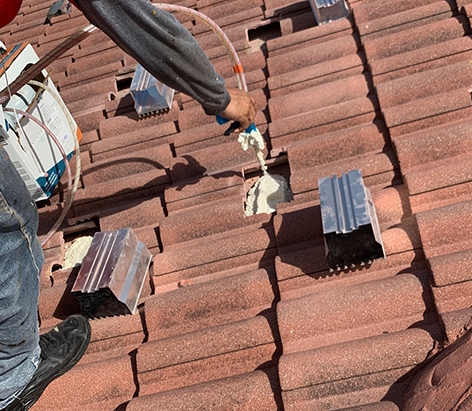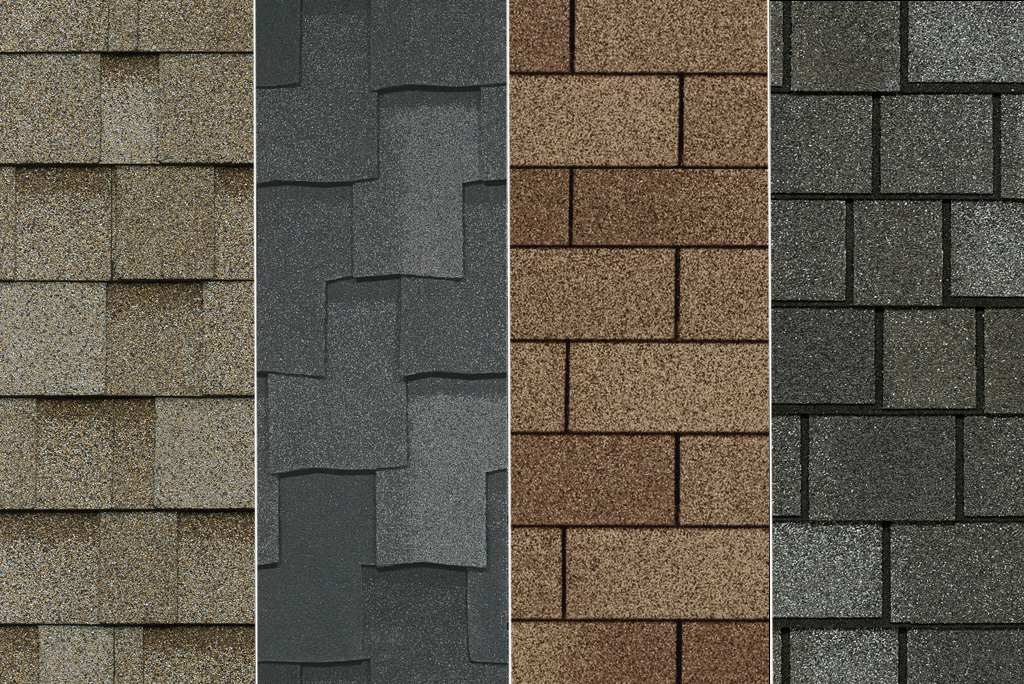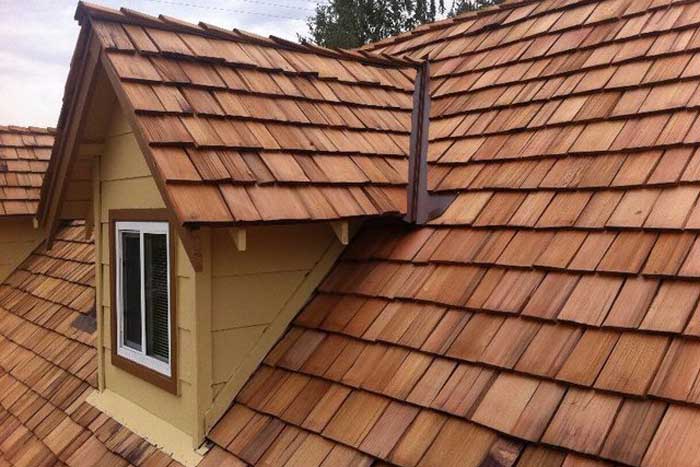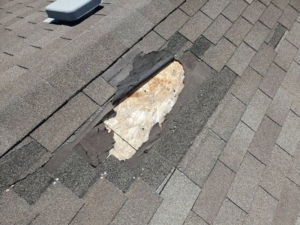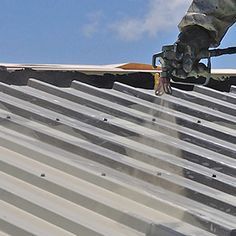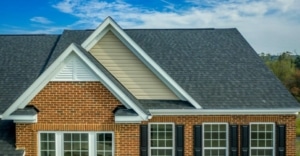How Much Does a New Roof Cost? Expenses by Region and Material
Are you wondering about the cost of installing a new roof? If so, you’ve come to the right place. In this blog post, we will get into the factors that influence the price of a new roof and provide you with a clear understanding of what to expect. Whether you’re a homeowner planning for a future renovation or simply curious about roofing costs, this article will equip you with the needed knowledge. So, let’s get started and explore roof pricing.
Factors that Influence Roofing Costs
- Size and Complexity of the Roof
- Larger roofs require more materials, labor, and time, increasing the cost.
- Complex roof designs with multiple angles, valleys, or dormers can also raise costs.
- Roofing Material
- Choice of roofing material affects cost.
- Different materials have varying price points, durability, lifespan, energy efficiency, and aesthetic appeal.
- Roofing Design and Style
- Roof design and style complexity impact material and labor costs.
- Steeper or architecturally intricate roofs may require additional safety measures and skilled labor, potentially increasing expenses.
- Local Climate and Weather Conditions
- Regional climate and weather conditions influence the cost.
- Areas prone to extreme weather may necessitate more durable materials or additional reinforcement, increasing overall expenses.
Size and Complexity of the Roof
The size and complexity of the roof are major determinants of the overall cost. A larger roof will generally require more materials, labor, and time to complete, which naturally increases the price. Additionally, the complexity of the roof design, such as multiple angles, valleys, or dormers, can also contribute to higher costs. These factors often involve additional materials and skilled labor to ensure proper installation.
Roofing Material
The choice of roofing material is a crucial factor that affects the cost. Different materials come at varying price points, and each has its unique advantages and drawbacks. Asphalt shingles, for example, tend to be more affordable compared to metal or tile roofs. The durability, lifespan, energy efficiency, and aesthetic appeal associated with each material also contribute to the price variations. Consider their budget, desired longevity, and overall aesthetic vision when selecting the appropriate roofing material.
Roofing Design and Style
Roofs come in various designs and styles, ranging from simple gable roofs to more intricate hip or mansard roofs. The complexity of the design and style directly impacts the cost of materials and labor required for installation. Steeper roofs or roofs with intricate architectural details often involve additional safety measures and specialized skills, potentially resulting in higher costs. A homeowner should consider their desired roof design and style while keeping in mind the potential impact on the overall budget.
Local Climate and Weather Conditions
The local climate and weather conditions in a specific area play a significant role in determining the cost of a new roof. Regions prone to extreme weather events like hurricanes, heavy snowfall, or intense heat may require more durable roofing materials or additional reinforcement, driving up the overall expense.
Average Cost of Different Roofing Materials
When it comes to the cost of a new roof, one of the key factors to consider is the type of roofing material you choose. Each material has its own advantages, durability, and of course, cost.
Asphalt Shingles
Asphalt shingles are the most common roofing material in the United States due to their affordability and versatility. They are available in a wide range of styles and colors, allowing homeowners to achieve various aesthetic options. The average cost of asphalt shingles typically ranges from $100 to $200 per square foot (100 sq. ft), including labor and installation. However, factors such as the quality and brand of shingles, roof complexity, and location can influence the overall cost.
Metal Roofing
Metal roofing systems have gained popularity for their durability, energy efficiency, and sleek appearance. Although the upfront cost of metal roofs is higher than asphalt shingles, they offer a longer lifespan and potential energy savings in the long run. On average, metal roofing can cost between $200 and $600 per square foot, including professional installation. The price may vary depending on the type of metal used, such as aluminum, steel, or copper, as well as the complexity of the roof design.
Clay or Concrete Tiles
Clay or concrete tiles are renowned for their aesthetic appeal and durability. They provide a timeless and elegant look to any home. However, the cost of clay or concrete tile roofing tends to be higher compared to other materials. On average, the cost ranges from $300 to $800 per square foot, including installation. The higher price is due to the material’s longevity, resistance to fire and extreme weather conditions, and the expertise required for proper installation.
Wood Shingles or Shakes
Wood shingles or shakes offer a charming and natural appearance to homes, making them a popular choice for rustic or traditional architectural styles. The cost of wood roofing materials can range from $400 to $700 per square foot, including installation. However, it’s important to note that wood shingles require regular maintenance and may have a shorter lifespan compared to other materials. Local regulations and the availability of wood roofing options in your area can also affect the overall cost.
Slate Roofing
Slate roofing is considered one of the most durable and long-lasting roofing materials available. It offers a distinctive and elegant look to any home. However, the cost of slate roofing is significantly higher than other options due to its premium quality and labor-intensive installation process. The average price for slate roofing can range from $600 to $1,500 per square foot, including installation. The cost can vary depending on the origin and quality of the slate, as well as the complexity of the roof design.
Remember that these pricing ranges are estimates and can vary depending on various factors, such as the size of the roof, location, and the specific requirements of your project. It is always recommended to consult with professional roofing contractors to get accurate quotes based on your specific needs and preferences.
Now that we have explored the average costs of different roofing materials, let’s move on to the next section, where we will discuss additional factors that can influence the overall cost of a new roof.
Additional Costs to Consider
Removal and Disposal of Old Roofing
Before a new roof can be installed, the old roofing material must be removed and properly disposed of. This is not only a labor-intensive process but also requires specialized equipment. The cost for removing and disposing of the old roofing material can vary depending on factors such as the size of the roof and the type of material being removed. It’s essential to factor in this additional cost when budgeting for a new roof.
Roof Deck Repair or Replacement
The roof deck is the foundation of your roof and provides structural support. Over time, the roof deck may deteriorate due to water damage or age. If the roof deck is in poor condition, it may need to be repaired or replaced before the new roofing material can be installed. The cost of roof deck repair or replacement will depend on the extent of the damage and the size of the roof. It’s crucial to have a professional assess the condition of the roof deck to determine if any additional costs will be necessary.
Underlayment and Ventilation Systems
Underlayment and ventilation systems are crucial components of a roofing system. Underlayment provides an extra layer of protection against moisture and helps to extend the life of the roof. Ventilation systems help to regulate temperature and moisture levels in the attic, preventing issues such as mold growth and ice dams. The cost of underlayment and ventilation systems will depend on the size of the roof and the specific products used.
Flashing and Chimney Repairs
Flashing is used to seal joints and transitions on a roof, such as around chimneys, skylights, and vents. Over time, flashing may deteriorate or become damaged, leading to potential leaks and water damage. If the flashing needs repair or replacement, this will incur an additional cost. Additionally, if there are any issues with the chimney itself, such as cracks or deteriorating mortar, repairs may be necessary. It’s important to have a professional assess the condition of the flashing and chimney to determine if any extra costs will be involved.
Gutters and Downspouts
A properly functioning gutter system is essential for directing water away from the roof and foundation of your home. If your existing gutters are damaged or need to be replaced, it’s important to factor in this additional cost. Additionally, if the new roof installation requires changes to the gutter system or the addition of downspouts, this will also contribute to the overall expense. Ensuring that your gutters and downspouts are in good condition will help protect your new roof and prevent water damage.
Average Roofing Costs by Region
When it comes to replacing a roof, the cost can vary depending on where you live. Different regions in the United States have different average roofing costs due to factors such as material availability, labor rates, and local market conditions. In this section, we’ll explore the average roofing costs in four key regions: Northeast, Midwest, South, and West.
Northeast
In the Northeast region, roofing costs tend to be on the higher side compared to other parts of the country. This is primarily because the cost of living and labor rates are generally higher in this area. Additionally, the Northeast often experiences harsh winters, which can affect the roof’s durability and increase the demand for roofing services. On average, homeowners in the Northeast can expect to spend between $7,000 to $12,000 for a new roof, depending on the size and complexity of the project.
Midwest
Moving over to the Midwest, roofing costs are relatively moderate compared to the Northeast. The Midwest generally experiences milder weather conditions, which can have a positive impact on the longevity of roofs. The average cost of a new roof in this region ranges from $5,000 to $9,000. However, it’s important to note that specific factors such as the type of roofing material and the size of the roof can still influence the overall cost.
South
In the Southern region of the United States, roofing costs can vary significantly due to the diverse climate found in this area. From the hot and humid conditions of Florida to the occasional hurricanes along the Gulf Coast, different factors come into play when determining the cost of a new roof. On average, homeowners in the South can expect to spend between $3,500 to $7,500 for a new roof, depending on the specific location and requirements.
West
Lastly, let’s talk about the West region. Home to various climates spanning from the arid deserts of Nevada to the rainy Pacific Northwest, the West presents unique challenges for roof replacement. Costs in this region can be influenced by factors such as local regulations, material availability, and even proximity to major metropolitan areas. On average, homeowners in the West can expect to spend between $6,000 to $10,000 for a new roof, but keep in mind that prices may vary based on specific circumstances.
Considering your location within the United States is an essential factor when estimating the cost of a new roof. By being aware of the average roofing costs in your region, you can better prepare yourself financially for this significant home improvement project. Remember, these are just general estimates, and it’s always recommended to get multiple quotes from reputable local roofing contractors to have a precise idea of the costs associated with your specific project.
Hiring a Professional Roofer
When it comes to getting a new roof, hiring a professional roofer is essential. With their expertise and experience, they can ensure a high-quality installation that will protect your home for years to come. In this section, we will explore the benefits of hiring a professional, provide insights on how to choose the right roofer, and explain the importance of obtaining multiple quotes.
Benefits of Hiring a Professional
There are several advantages to hiring a professional roofer for your upcoming roof replacement project. Here are a few key benefits to consider:
- Expertise and Knowledge: Professional roofers have extensive knowledge of different roofing materials, techniques, and industry best practices. They stay updated with the latest advancements to ensure your roof is installed correctly and efficiently.
- Quality Workmanship: Professional roofers have the necessary skills to deliver high-quality workmanship. They are trained to handle complex roofing projects, ensuring that every detail is taken care of, from proper flashing installation to precise shingle alignment.
- Safety Measures: Roofing can be a dangerous task, especially if you are not familiar with the process. Professional roofers prioritize safety and have the proper equipment and training to work at heights securely. By hiring professionals, you can avoid putting yourself at risk.
- Warranty Coverage: Reputable roofing contractors often provide warranties on both materials and workmanship. This ensures that you are protected in case of any issues or defects that may arise after the installation. Having a warranty provides peace of mind and can save you from unexpected repair costs.
How to Choose the Right Roofer
Selecting the right roofer requires careful consideration. Here are some factors to keep in mind when choosing a professional roofing contractor:
- Credentials and Reputation: Research the roofer’s credentials, such as licenses, certifications, and insurance coverage. Additionally, check online reviews and ask for references to gauge their reputation within the local community.
- Experience: Look for roofers with ample experience in handling projects similar to yours. An experienced roofer will have a better understanding of the specific requirements and challenges associated with your roofing system.
- Portfolio and References: Request to see their portfolio of completed projects. This will help you assess the quality of their work. Additionally, ask for references and reach out to past clients to hear about their experiences working with the roofer.
- Detailed Written Estimate: Obtain a detailed, written estimate from multiple roofers. This will ensure you have a clear understanding of the scope of work, materials, timeline, and cost involved. It also allows for easy comparison between different contractors.
Getting Multiple Quotes
To make an informed decision, it is crucial to gather multiple quotes from different roofing contractors. Here’s why obtaining multiple quotes is important:
- Cost Comparison: By collecting multiple quotes, you can compare the costs associated with your roofing project. This allows you to evaluate whether the estimates are reasonable and within your budget.
- Scope and Recommendations: Each roofer may recommend different approaches or materials for your project. Getting multiple quotes enables you to understand the variations in their recommendations and make an informed decision based on your preferences and needs.
- Negotiating Power: Having multiple quotes gives you leverage when negotiating with the roofers. You can use the information to discuss pricing, materials, and any additional services or warranties they may offer. This can potentially lead to obtaining better terms or pricing.
Remember, while price is an essential factor, it should not be the sole deciding factor. Consider the reputation, expertise, and other factors discussed earlier when evaluating the quotes received.
By hiring a professional roofer, you can take advantage of their expertise, ensure top-quality workmanship, and enjoy the peace of mind that comes with a well-installed roof. Remember to choose a reputable contractor and obtain multiple quotes to make an informed decision for your upcoming roofing project.
Conclusion
In conclusion, the cost of a new roof can vary depending on various factors such as the size of the roof, the materials used, and the complexity of the installation. On average, homeowners can expect to pay anywhere from $5,000 to $10,000 for a standard asphalt shingle roof. However, it is important to keep in mind that this is just a rough estimate, and prices can significantly increase for larger or more intricate roofs.
To get an accurate cost estimate for your specific roofing project, it is always best to consult with professional roofing contractors. They will assess your roof, take into consideration any additional requirements or repairs, and provide you with an accurate quote. Remember, investing in a high-quality roof is essential to protect your home and ensure its longevity, so it is important not to compromise solely on cost.
By understanding the various factors that can impact the cost of a new roof, you can better prepare yourself financially and make informed decisions when it comes to investing in the right roof for your home. Don’t forget to consider long-term benefits and the expertise of professional roofers to ensure you receive the best value for your money.

